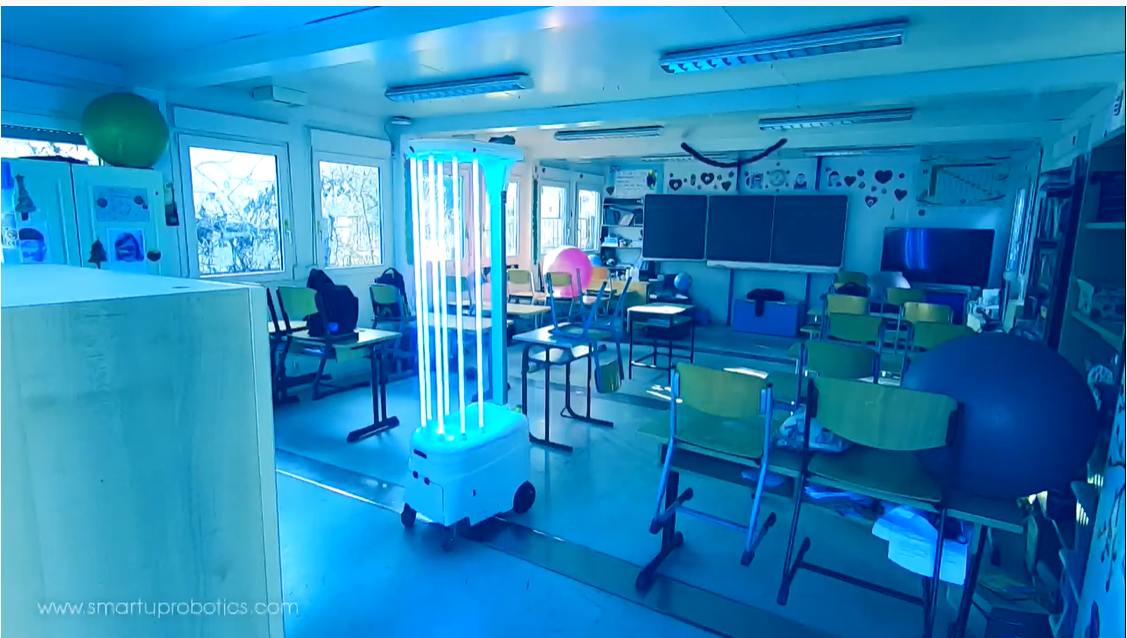ViroFighter: Hungarian disinfection robot built to combat the coronavirus
It could help keep educational institutions and hospitals safe by improving the efficacy of cleaning and reducing the time spent on sanitising public spaces.
According to Szeretlekmagyarorszag.hu, the intelligent robot was developed by the European Knowledge Centre in cooperation with ELTE-Soft, a non-profit owned by Eötvös Loránd University. Over 6 months of work has gone into its design, and the process is not over yet: its imaging system is currently undergoing further improvement.
“Our area of expertise is artificial intelligence and robot technology. When the pandemic hit, we got the idea to build something like this.
There were already some similar products on the market, but they all had issues: they were too heavy, too slow to charge, and too quick to use up battery power.
In addition, they were not completely autonomous either; staff was needed to operate them,” explained Tamás Horváth, the commercial director of European Knowledge Centre.

A ViroFighter robot disinfecting a room at a Hungarian clinic. Source: still from a video (ViroFighter, YouTube)
In contrast, the newly developed robot weighs 73 kg (50 kg if the battery is removed), allowing two people to lift it comfortably. Therefore, the cleaning of old, multi-storey buildings that lack elevators will not be a problem anymore. Thanks to the artificial intelligence operating within, it is capable of mapping a room on its own and determining the optimal pathway for disinfecting it as quickly as possible. It has already been tested at an accredited laboratory and on-site at various schools and hospitals. “Everybody is open to the idea,” said Tamás Horváth.
Concerning its efficacy, the robot can achieve a 6-log kill rate, meaning that it is capable of destroying 99.9999% of pathogens present, making it adequate even for hospital areas where the risk of cross-infection is high.
The UV-C light emitted by the robot needs to be beamed onto the same spot for a mere 10 seconds to obliterate viruses, reducing the time necessary to disinfect an average-sized surgical site to 10 minutes, instead of the 30-60 required when it is done manually. As an environmentally friendly alternative to chemicals and ozone, UV-C light has been used as a sterilising agent for many years, primarily in dental practices and pools.
The robot has one more useful function: it records all of its actions, producing a report of where it has been and when, which users will receive over e-mail. In the future, this could help determine where a certain person might have been infected.

Read alsoHungarian technology to be used for treating waste water in Ghana
Source: szeretlekmagyarorszag.hu
please make a donation here
Hot news
Syrian plane in Budapest? Group leader of Fidesz responds
MÁV boosts holiday travel in Hungary: More trains, extra coaches, and planning tips
Hungary rises to 4th in EU VAT compliance ranking, achieving major tax gap reduction
3 Quintessential Hungarian Christmas recipes for the festive table
Hungarian universities defend autonomy, condemn EU decision on Erasmus+ exclusion
Be prepared: Traffic at Budapest Airport to be brutal at Christmas




